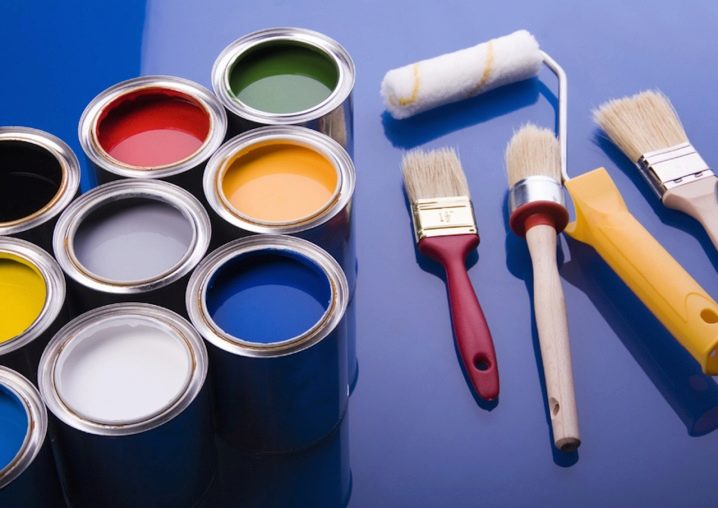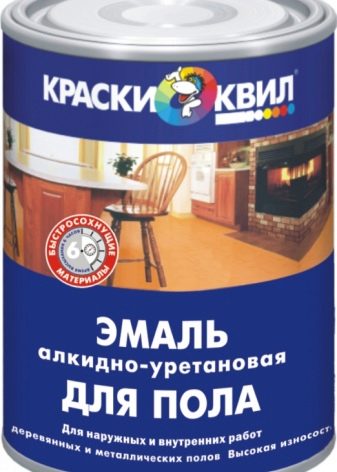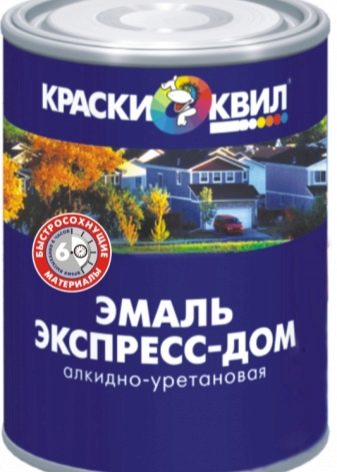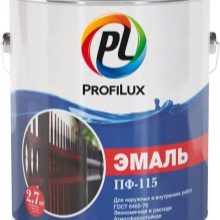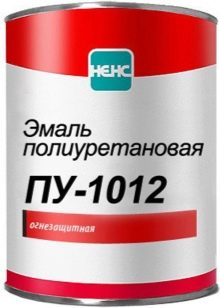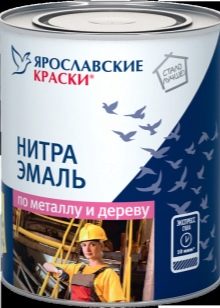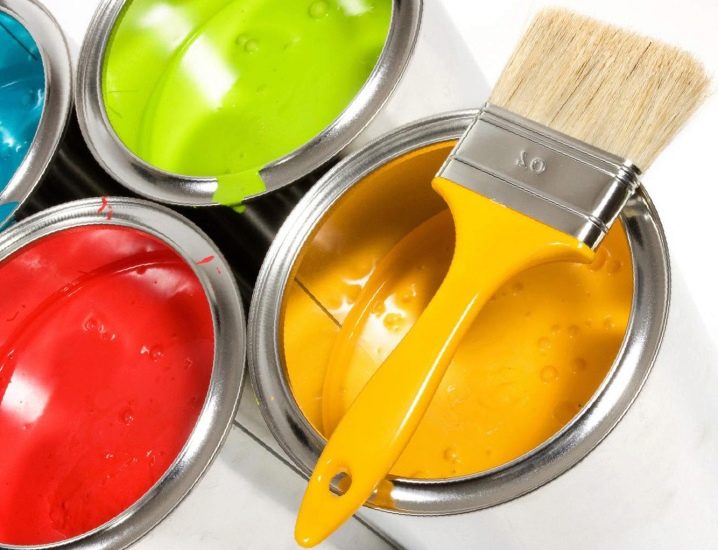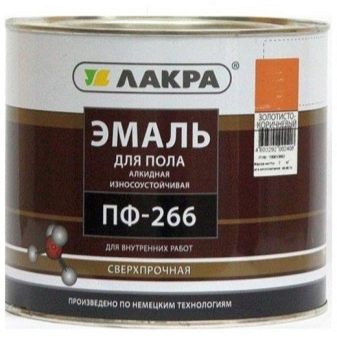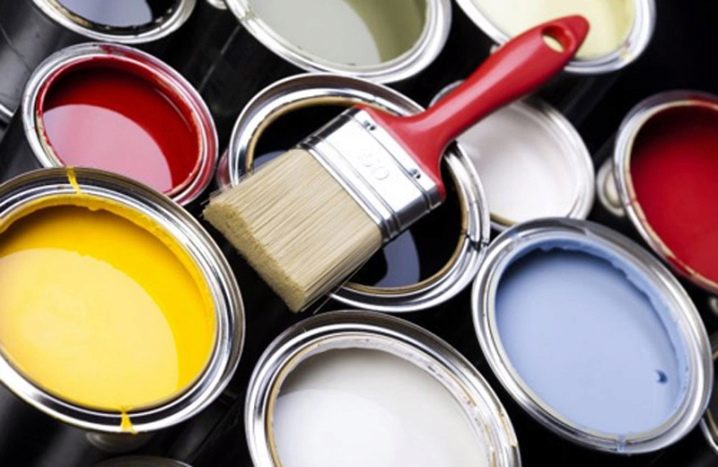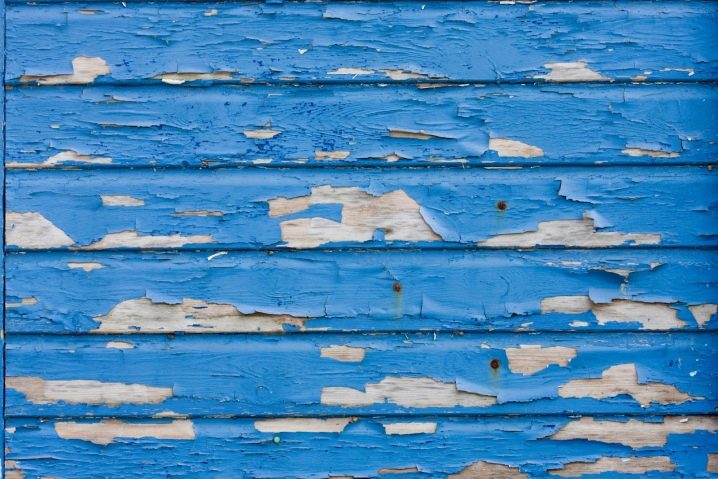Enamel paint: the subtleties of choice
A wide variety of paints and varnishes is presented on the construction market. Sometimes it is not easy to understand it, even to those who have repeatedly encountered repairs. You can choose the best option, only knowing the characteristics and features of the use of certain types of materials. Our article is devoted to the subtleties of the choice of paint-enamel.
Composition
All existing modern varieties of paint enamels can be divided into several types. This classification is based on the composition. Each type has its own characteristics. We give only the most popular types of enamels. If you have already decided what surface you will paint, just choose which one meets the requirements:
- Alkyd (AU). Can be used both for external, and for internal works.Possess high wear resistance and gloss. You can increase the service life of the coating by applying successively 2 coats of paint. Before applying the enamel paint, the use of a primer is mandatory.
If the application technology is observed, the service life is about 4 years outdoors.
- Pentaphthalic. This group can be easily recognized by marking PF on the bank, which means the content of pentaphthalic varnish in the composition. One of the most popular and used enamel paints. Choosing a paint, look for the inscription "GOST 6465-76" or "GOST 6465-53". You may also find that the package will be labeled PF-115 or PF-226. The first is intended for outdoor work, as she is not afraid of any vagaries of the weather, but the second is suitable only for internal work.
- Glyphthalic. It has established GF marking. The main disadvantage of such enamel is the drying time. In some cases, do not do without special equipment. For example, when it comes to painting the car body.
- Nitrocellulose (NTS). The main advantage is fast, almost instant drying. But this same feature causes difficulties in applying, therefore, sprayers are used when working with it.It is worth noting that the sale of this product is prohibited or limited in some countries, as the product is very toxic.
- Polyurethane (PU). If you need to paint the surface, which will be a frequent mechanical impact, then select this group. It is ideal for floors, even in high-traffic areas.
Marking
Even before going to the store, you can decide what kind of paint you need. For this it is necessary to understand that the letters and numbers on the label have their meaning. With the letter marking we have already figured out. Let's try to understand what the first digit stands for after it.
Take the paint - enamel PF-115. We will be judged only by the first digit, that is, by "1." That it means the scope. Even if you didn't find in the description, for which surfaces this or that can of paint is intended, You can easily navigate by looking at this figure:
- 1 - designed for outdoor use or, in other words, weatherproof;
- 2 - for interior work (officially - limited weathering);
- 3 - conservation;
- 4 - waterproof (suitable for rooms with high humidity);
- 5 - special enamels and paints (they have individual features for use and a narrow range of applications);
- 6 - oil and petrol resistant;
- 7 - resistant to chemical attack;
- 8 - heat resistant;
- 9 - electrically insulating or electrically conductive.
Application features
Enamel paint has good adhesion, which greatly facilitates the work with it. The surface on which it is applied must be thoroughly cleaned from dirt and dust. Putty at the same time the surface is not necessary. It is enough to pre-coat the surface with a special primer and allow it to dry completely.
Under the general name, different types of enamel paints still have different technical characteristics. Therefore, we can not talk about the universality of their use for different surfaces and types of work. Nitrocellulose are excellent for wood processing, and alkyd have a wider range of applications: from exterior work to decorative painting.
Paint-enamel have a high density, so before use, most of them must be diluted.For this you can use almost any solvent or diluent of any kind.
Before you begin to combine the compositions, carefully read the instructions. If the maximum permissible dilution rate is exceeded, specifications may be significantly affected.
Advantages and disadvantages
Indisputable advantages include the following properties of enamel paints:
- Wear resistance. Enamel paint, when used indoors, is able to maintain an excellent appearance and performance for 15 years.
- Ease of use. Cope with painting can even beginner. To achieve the desired result, you must carefully read the instructions and follow it. Professional or special tools are also not needed, you can use ordinary brushes for applying.
- Low cost. In the market economy, each manufacturer sets its own price for its product, but the average price per kilogram of high-quality paint is 65-70 rubles.
- Rich color palette. Enamel paints differ in saturation of shades.It all depends on what color is closer to you or more suitable for the existing interior. It offers a bright, pastel, universal ball or any other range of shades, the main thing is to choose the right one.
- Quick drying In contrast to oil paints, which may require a very long period for drying, enamel dries very quickly, sometimes even one hour is enough for them.
Consider now the shortcomings that can affect your decision to purchase paint-enamel:
- High toxicity. If staining is done indoors, it is not recommended to stay in it for the next 24 hours.
- Short life. To a greater extent this applies to those paints that are intended for outdoor use. With aggressive or adverse atmospheric conditions, it will last about a year. If you do not plan to update the treated surface every year, we advise you to pay attention to more practical options.
- Exposure to ultraviolet rays. With regular exposure to the painted surface, the sun can shorten the life of this paintwork material.As a result, it will fade, and cracks will appear.
What to look for when choosing?
Some tips:
- Appearance. Even the highest quality paint can become unusable if storage was carried out in violation of the rules or the bank itself is damaged. Before buying, carefully inspect the container, it should not have dents, scratches and other damage. This is not about aesthetic beauty, but that as a result of the ingress of air the paint could dry out.
- Shelf life. It can be easily found on the label or the bank itself. Always pay attention to this. The longer the expiration date, the better. After all, force majeure circumstances are not excluded, under which you will have to transfer the planned painting.
- Consumption. It is also listed on the can of paintwork material. If you buy enamel of several colors, then the flow must be calculated for each. For example, dark blue can cover 14-17 square meters, and red only 5-10. White paint of this group is able to cover an area of 7-10 square meters.
- Inscription GOST. A digital code may vary, but its very presence is the same prerequisite as the expiration date or labeling.
Each finishing material has its pros and cons.Knowing all the nuances and subtleties, it is possible to find the perfect option for yourself. See the following video for the types and rules for choosing paints for the ceiling, floor and walls.

